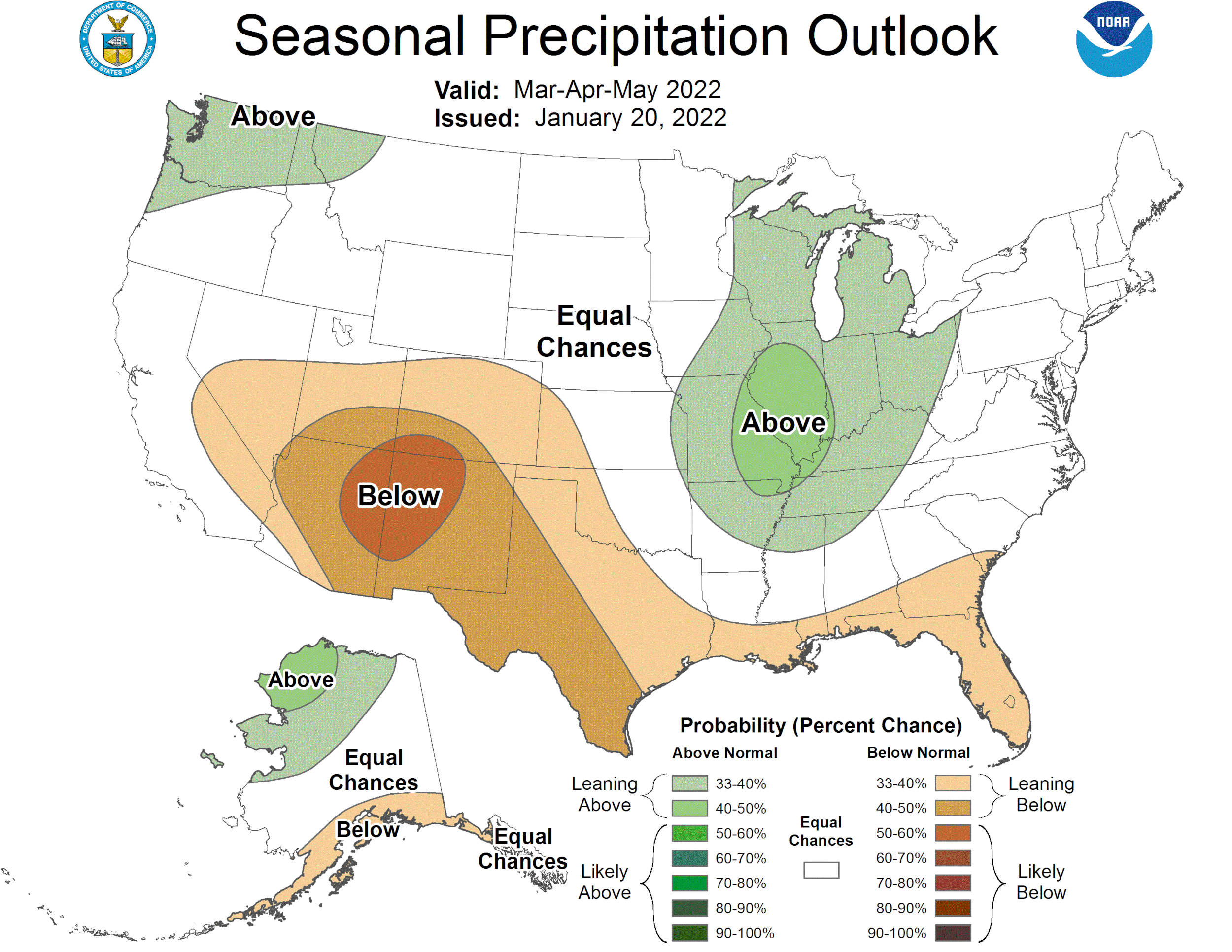STORMWATER UTILITIES FACE ANOTHER TOUGH SPRING
The spring of 2019 brought devastating flooding across large swaths of the United States, from the South to the Northeast. Stormwater utilities still dealing with the aftermath of 2019 now face forecasts of another very wet spring.
NOAA 2020 THREE MONTH OUTLOOK
The NOAA 2020 precipitation outlook indicates a high probability of above normal seasonal precipitation amounts from the Mississippi Valley to the East Coast. The graphic depicts forecasts from April - June 2020.
Excessive precipitation, along with the generally poor condition of most of the stormwater infrastructure in the US means that capacity to effectively channel stormwater will be stressed during periods of high local precipitation.
Asset Management Programs help utilities manage their stormwater assets
In a recent national survey of municipal separate storm sewer system (MS4) permittees, respondents ranked lack of funding or availability of capital, aging infrastructure, and increasing or expanding regulations as their most important stormwater program challenges.
Clearly, existing stormwater infrastructure must perform optimally at the outer limit of its capacity in order to control flooding. To achieve this peak performance, all of the assets that make up a stormwater utility must be in good repair.
The Environmental Protection Agency (EPA) has encouraged stormwater utilities to develop and implement Asset Management Programs that include using Asset Management software to help manage their assets.
Asset management software is a powerful tool to help utilities gather the data necessary to meet regulatory requirements and drive decision-making for future infrastructure development. The work involved in implementing Asset Management Software (AMS) within utilities is daunting. However, the return on that investment results in the reduction/stabilization of facility operating, maintenance, and renewal costs. Studies show that this savings is substantial over time.
Step-by-step
One of the first steps in developing an asset management program is creating an inventory of assets and scoring those assets related to their condition. Asset Management Software helps this process by digitizing information and tying it to a Geographic Information System (GIS) that visually depicts the location and type of asset. When maintenance and inspection forms are also tied to the asset, the whole process of inspection and maintenance can be streamlined.
Disconnect in the field
Unfortunately, the usefulness of asset management software doesn’t always translate to usefulness in the field. Often, field workers have incompatible software (or have to translate spreadsheets or paper worksheets into data in the AMS). Even if the field workers have direct access to the AMS, there is often a disconnect between the depiction of an asset location on a digital map and the physical location of a specific asset in the field. This results in wasted time and confusion in the field to locate and record maintenance / inspection activities.
Fortunately, a simple and cost-effective solution exists. RFID technology has been used for years to track and manage inventory has been adapted to link the physical location to the digital location.
Simple technology connects the digital to the physical
Each asset is marked with an RFID-enabled tag which is read into the AMS and linked to management / inspection records. This simple tool takes the guesswork out of locating and verifying assets while instantly producing an auditable inspection / maintenance trail in the asset management system.
Certified RFID-enabled asset markers are available in many configurations, including curb markers, manhole cover markers, hydrant markers and a range of other durable configurations, including underground markers. RFID markers are passive, don’t require batteries and are extremely durable.
Stormwater utilities across the country are deploying this system, called InfraMarker®, to extend the capabilities of their asset management/GIS systems to the field.
Call us today to schedule a demo of the InfraMarker RFID solution.




